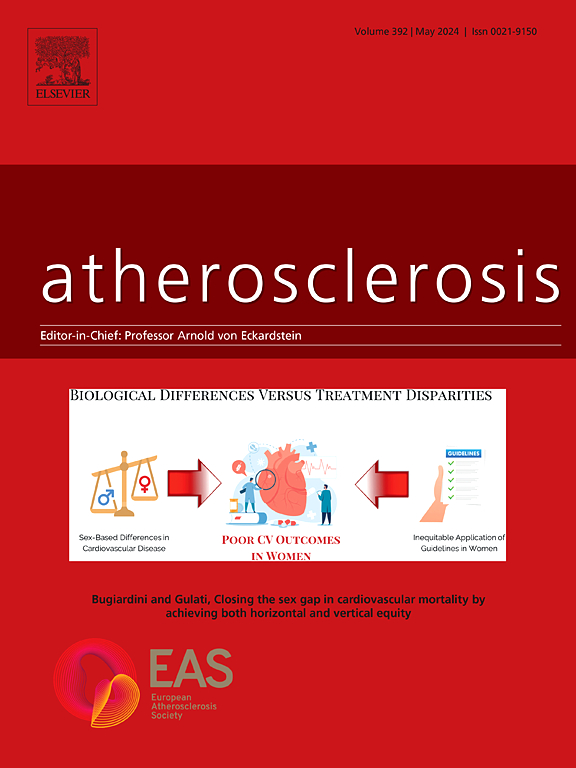Cascade screening of a Pakistani consanguineous familial hypercholesterolemia cohort: Identification of seven new homozygous patients
IF 4.9
2区 医学
Q1 CARDIAC & CARDIOVASCULAR SYSTEMS
引用次数: 0
Abstract
Background and aims
Familial hypercholesterolemia (FH) is a genetic disorder characterized by elevated low-density lipoprotein cholesterol (LDL-C) levels from birth, significantly increasing the risk of premature cardiac events and mortality. In Pakistan, despite the potential burden of FH, comprehensive studies evaluating its genetic characteristics, cascade screening significance, and lipoprotein (a) [Lp(a)] levels remain scarce. Understanding these factors is crucial for effective diagnosis, risk assessment, and management of FH in the Pakistani population.
Methods
After the identification of index case with clinical homozygous FH, characterized by high LDL-C and high Lp(a) levels together with a positive personal and family history of cardiovascular disease, a cascade screening of 66 relatives from a consanguineous family was performed. Blood samples were obtained from all subjects for biochemical and genetic analysis. Simon Broome criteria was applied on children for clinical FH diagnosis. Dutch Lipid Clinic Network scores were calculated for individuals aged ≥16years. Genetic screening was performed using next-generation sequencing to analyse all coding regions and exon-intron borders of the following genes: ALMS1, APOA1, APOB, APOA5, APOC2, APOC3, APOE, ABCA1, ABCG5, ABCG8, CREB3L3, GPIHBP1, LDLR, LDLRAP1, LIPA, LMF1, LPL, and PCSK9. The identified variants were confirmed using Sanger sequencing.
Results
Cascade screening identified seven homozygous and 25 heterozygous FH patients with pathogenic variant in the LDLR gene (NM_000527.5: c.2416dupG: p. Val806GlyfsTer11). Additionally, heterozygous variants of uncertain significance were identified in 4 other subjects.
Conclusion
This study underscores the high effectiveness of cascade screening in consanguineous families and societies that could lead to early detection and prevention.

求助全文
约1分钟内获得全文
求助全文
来源期刊

Atherosclerosis
医学-外周血管病
CiteScore
9.80
自引率
3.80%
发文量
1269
审稿时长
36 days
期刊介绍:
Atherosclerosis has an open access mirror journal Atherosclerosis: X, sharing the same aims and scope, editorial team, submission system and rigorous peer review.
Atherosclerosis brings together, from all sources, papers concerned with investigation on atherosclerosis, its risk factors and clinical manifestations. Atherosclerosis covers basic and translational, clinical and population research approaches to arterial and vascular biology and disease, as well as their risk factors including: disturbances of lipid and lipoprotein metabolism, diabetes and hypertension, thrombosis, and inflammation. The Editors are interested in original or review papers dealing with the pathogenesis, environmental, genetic and epigenetic basis, diagnosis or treatment of atherosclerosis and related diseases as well as their risk factors.
 求助内容:
求助内容: 应助结果提醒方式:
应助结果提醒方式:


